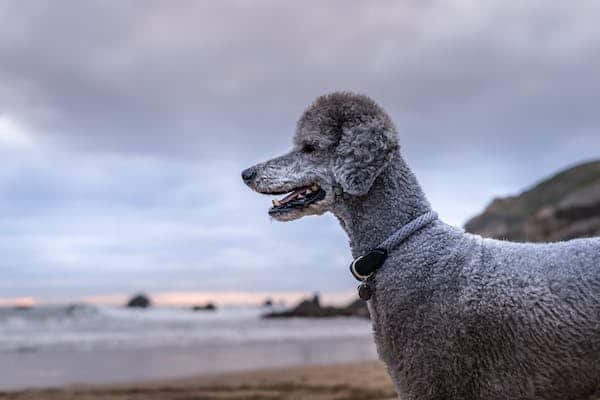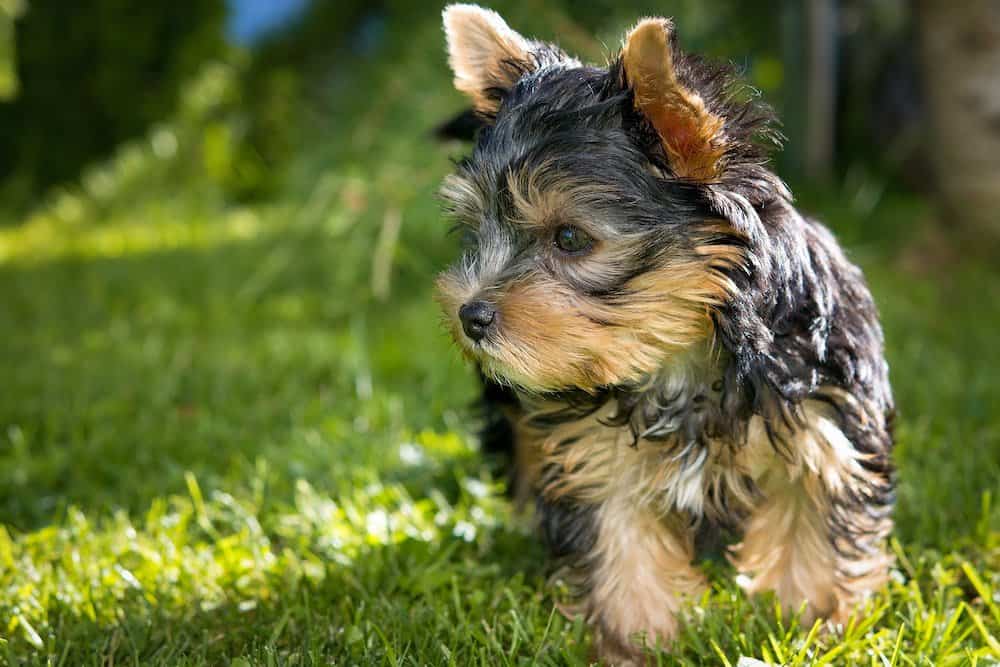For the Purrbabies


From silvery Weimaraners to blue-gray pitties, discover the diverse world of dogs with naturally gray coats.

While dogs come in countless colors, there’s something distinctly striking about a gray coat. Whether you’re drawn to the silver sheen of a Weimaraner or the charcoal fluff of a Norwegian Elkhound, gray dogs offer unique appeal across various breeds, sizes, and temperaments. Though coat color shouldn’t be your primary consideration when choosing a dog, understanding which breeds naturally come in gray can help narrow your search. This guide explores breeds where gray is either a signature shade or common variation, covering everything from tiny gray terriers to majestic gray working dogs.
The Alaskan malamute comes in various shades of gray hair, from true gray to blue and silver. The official dog of the state of Alaska is considered among the oldest northern dog breeds and has a dense coat made for cold climates. But this large dog breed also has a sweet, loyal personality, and for this reason, they’ve become increasingly popular pets for active owners.

The coat of an American pit bull terrier (APBT) will vary and often include a solid color like gray or black. Other APBTs may come in bi or tri-colors. The breed has been controversial over the years, with some believing pit bulls have a propensity to be overly dangerous (Trusted Source) . However, many believe these dogs are unfairly stereotyped and that any overt aggression depends on the individual dog rather than any one breed. Most APBT owners agree that dogs can be loyal and loving, particularly with training using positive reinforcement from a young age.

The American Staffordshire terrier strongly resembles an American pit bull terrier, and is often included under the umbrella of the catch-all term “pit bull.” However, the two are usually considered different dog breeds, depending on the registry. The AmStaff typically has a less defined muscle tone than the APBT. This dog’s color may include blue brindle, which can appear gray. AmStaffs boast high intelligence and have loving, energetic personalities.

Blue merle is one of the four commonly recognized colors for the Australian shepherd. The hue can often look gray with speckling patterns. These loving and high-energy dogs have a strong instinct to protect, making them good guard dogs. However, they require training from a young age to manage their energy and these instincts, particularly around strangers. Prospective Aussie owners will want to research reputable breeders before purchasing a puppy, as this breed can be susceptible to blindness and/or deafness due to the double merle (Trusted Source) gene.

The bearded collie has a coarse, shaggy overcoat that may come in a blue hue similar to gray. However, the thick double coat also features a smooth, long undercoat. These dogs are playful and adaptable, making them friends to small children and strangers alike.

Lassie, a classic collie, may have been known for her shades of tan, brown (liver), and white. But one of her breed’s descendants, border collies, come in 17 recognized coat colors, including blue. Extremely energetic and playful, border collies generally take well to training, are affectionate with family members (but may prefer a home with older children), and are full of energy, so they do best when given a job to do.

One of the large breeds on this list, the cane corso can weigh more than 100 pounds. They may come in a gray brindle pattern or with gray mask markings. The breed has a long history of being royal guard dogs, but the cane corso these days usually has an affectionate personality. The intelligent breed remains fiercely loyal, so early socialization is important in helping a cane corso become the best dog they can be.

A Chinese Crested might come with blue or slate hair, though the breed’s spotted pink skin, which juxtaposes against the feathery fur, typically draws most of the attention. These dogs typically weigh between 8 and 12 pounds., making the Chinese crested one of the more portable small gray dog breeds on this list. Looks aside, a Chinese crested dog is typically loving, loyal, and eager to please, making the breed one of the easier ones to train.

The Chow Chow’s distinct lion’s mane around their face stands out and can often come in gray or blue. These powerful dogs are generally easy to housebreak but have a more serious demeanor and independent streak. The breed is also one of the older ones — it’s believed chow chows have been around for millennia, with depictions in artifacts as far back as circa 206 b.c. Chow chows are also among the only dog breeds known for having a black tongue.

Solid gray markings are among the shades that meet the American Kennel Club breed standard for the German shepherd dog. A working dog at heart, the breed is often used in search and rescue or police work. But a GSD also loves being a family pet, known for getting along well with small children, strangers, and other animals.

The regal and reliable Great Dane comes in a variety of colors, including silver and blue, which may be gray enough for you. These playful dogs have long legs made for going on seemingly endless walks. The energetic breed needs plenty of exercise and opportunities to play — and their big, brown eyes make it hard to resist their requests for just one more toss of the ball during fetch.

Another one of the large dog breeds on this list, the male Irish wolfhound can weigh up to 120 pounds or more. Gray, gray and brindle, silver, and blue are among the commonly-seen coat colors. The breed’s rough, shaggy, and long fur requires frequent grooming, so prospective pet parents should keep that in mind. First bred as a sighthound, the Irish wolfhound has natural hunting instincts but is also known for having a gentle personality that often surprises some, given the breed’s imposing size.

Solid blue and white and blue are among the Italian Greyhound’s common coat color combinations. The breed’s coat is so short that experts generally recommend bundling the pups up in winter. Alert and playful, Italian greyhounds are usually friendly towards other dogs and love their humans.

The shaggy outer coat is a hallmark characteristic of the Old English Sheepdog. The dog breed has a double coat, requiring regular grooming, as you might expect. It comes in various tones, including white and gray, blue and white, and blue, gray, and white. Underneath all that long hair, the OES is easy-going and loving. They’re fantastic family dogs, typically getting along swimmingly with small children and eager to heap plenty of love on parents of any age.

The Poodle’s proud stance gives the breed an aristocratic appeal, but the dogs are in fact agile athletes with affectionate personalities. The breed’s hallmark curly coat can come in a blue or gray hue, and the breed may come in three different sizes. A standard must be more than 15 inches tall at the shoulder. Miniatures are 15 inches or less, and toy poodles can stand up to 10 inches tall.

Known lovingly as “weims,” Weimaraners have brindled fur as puppies. However, adult Weimaraners have short coats of a solid color of blue, gray, or silver gray. These dogs originated in Germany as hunting dogs and are independent thinkers. However, weims form strong bonds with their families and don’t like being left alone, making them an ideal fit for active pet parents who can spend time with their furry friends.

The Siberian Husky’s original purpose was to be a sled dog. The dog breed hauled heavy loads, sometimes including emergency supplies, in cold climates, often of the sub-zero variety. These days, Siberian huskies are commonly found in gray and white, and many have piercing blue eyes. The athletic pups with long coats made for cold weather are great family pets. They tend to get along well with small children and are affectionate. Regular exercise is still important for these dogs to keep them happy and healthy.

The smallest of the dogs generally considered among the “pit bull breeds,” the Staffordshire Bull Terrier can come in a grayish blue, with or without white. The smooth, short coat is generally easy to maintain. Staffies are smaller than the related American Staffordshire terriers, and these pocket-sized pit bulls have similar playful, intelligent, and loving personalities.

The Yorkshire Terrier, known lovingly as the “Yorkie,” often comes in a tan and blue coat that appears gray. The pint-sized pups have long, silky-smooth fur that requires frequent grooming. Despite their small stature, Yorkies are typically full of charm and personality. The breed is typically assertive yet affectionate and is never shy about barking.

The Romanian Carpathian Shepherd dog (Trusted Source) , which may come in black and wolf gray, is naturally protective and loyal. The highly-intelligent breed generally has an even, dignified temperament and can remain calm even in the presence of small children. Still, the Romanian Carpathian shepherd dog can be incredibly strong-willed and may take more time to train. An experienced dog owner, tons of positive reinforcement (Trusted Source) , and a professional trainer are all important.

The “royal dog of Scotland” is among the tallest dog breeds in the world. The Scottish deerhound moves majestically, and the blue-gray coat is considered one of the most beautiful coat colors of any dog by breed enthusiasts. Bred to hunt the deer as their name suggests, the Scottish deerhound is often lauded today for being highly affectionate towards humans and accepting of other dogs.

Not currently recognized by any major kennel club, the blue lacy is one of a kind, true to its Texas roots. The breed was recognized as the official state dog of Texas by then-Governor Rick Perry in 2005. But the word “blue” is a bit of a misnomer. While often blue in appearance like their namesake, a lacy dog’s color may be a shade of gray ranging from silver to charcoal, red, or “tri” (red, blue, and white).

Color is one trait to consider in a dog breed, but it’s certainly not the only thing that should sway your decision when choosing a dog. Considering other physical and behavioral traits before settling on a new furry friend is always a good idea. Different pets have different needs whether they have gorgeous gray coats or not.
It’s also worth noting that some of the most popular dog breeds, like the golden retriever or Pembroke Welsh corgi, don’t have gray fur but may be the best fit for your family. A veterinarian, reputable breeder, and animal shelter can provide you with more insights on particular breeds. The tips below should be kept in mind, whether you’re on the hunt for beautiful gray dogs or have your eye on any other breed.








